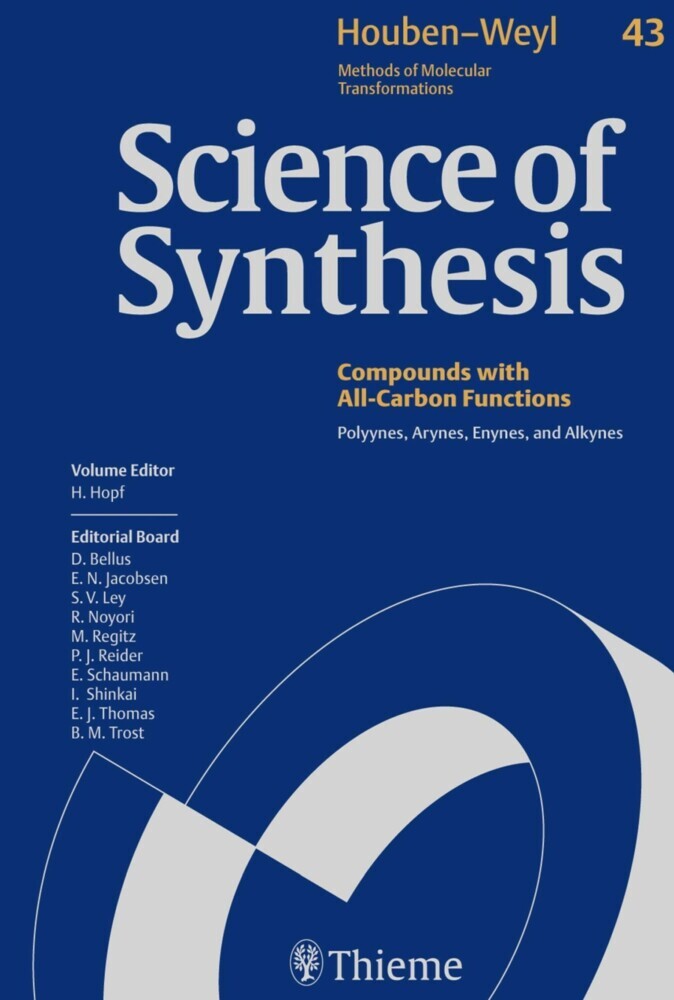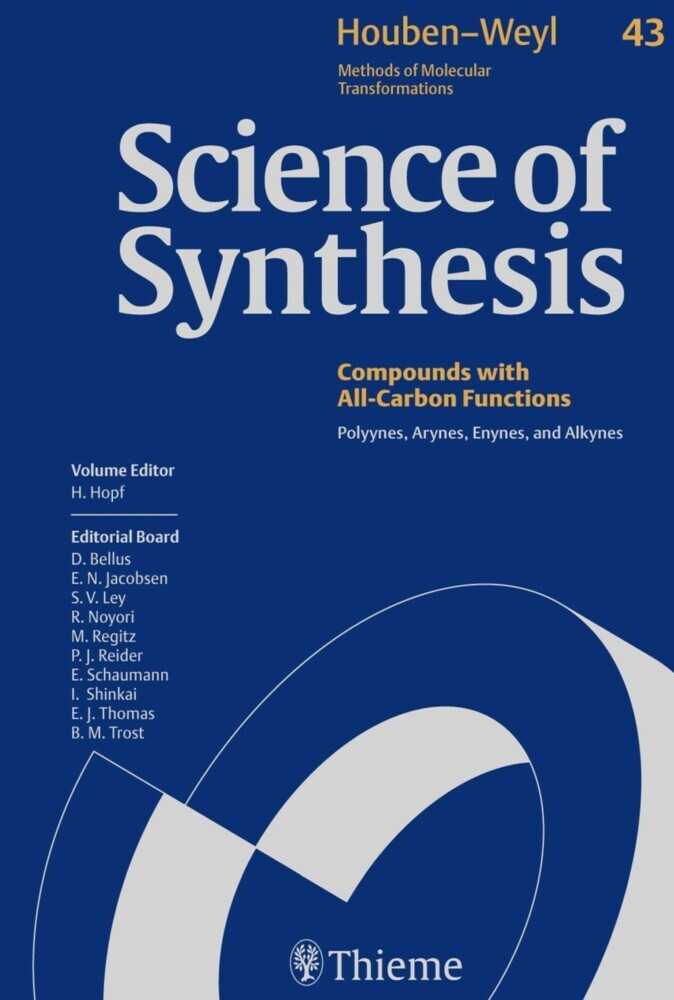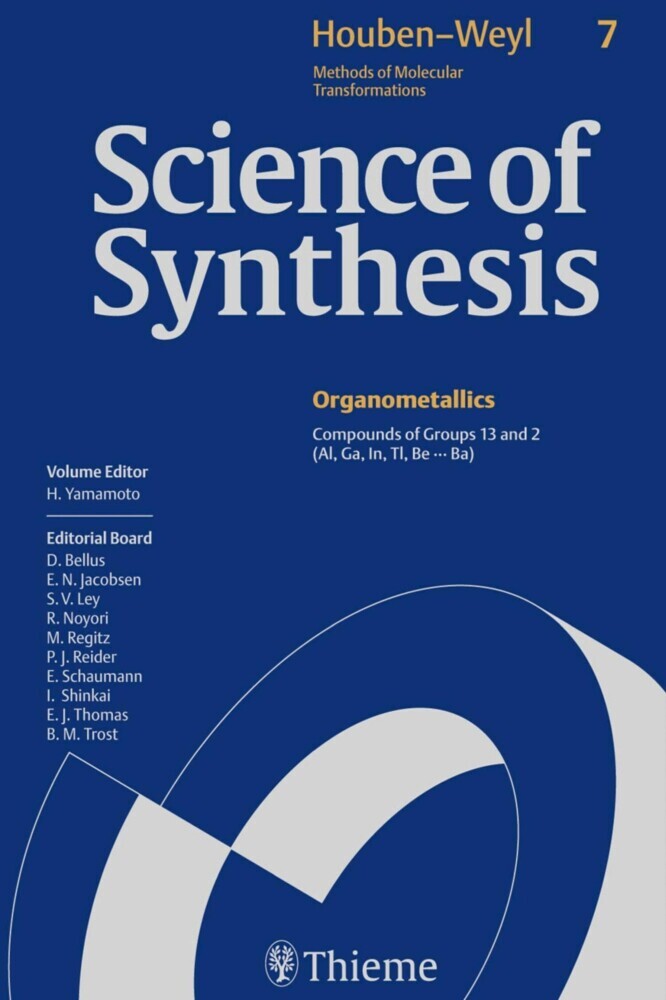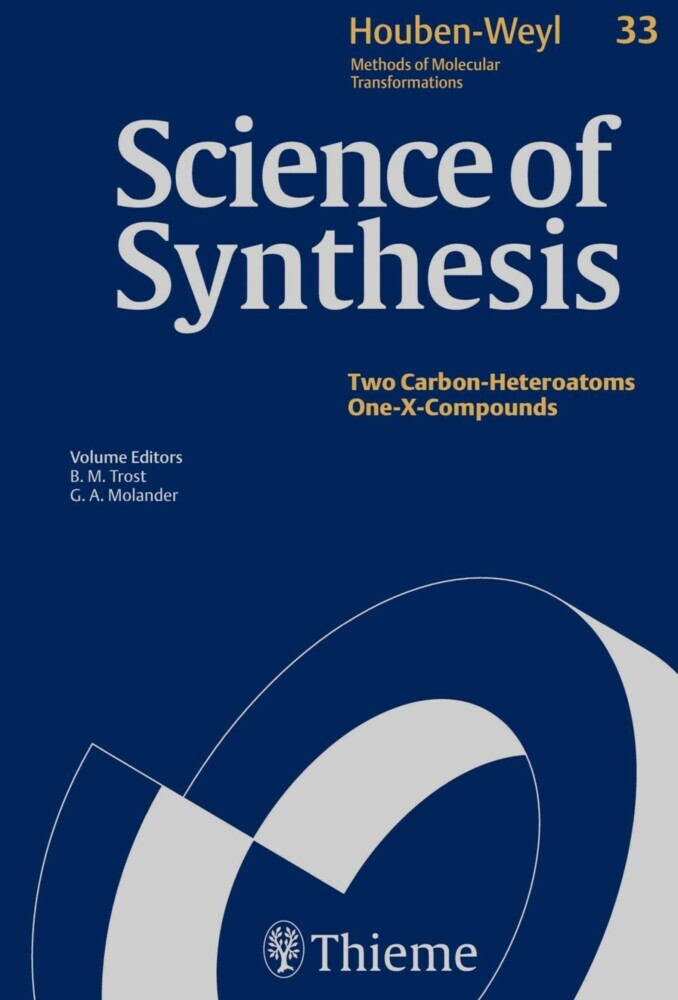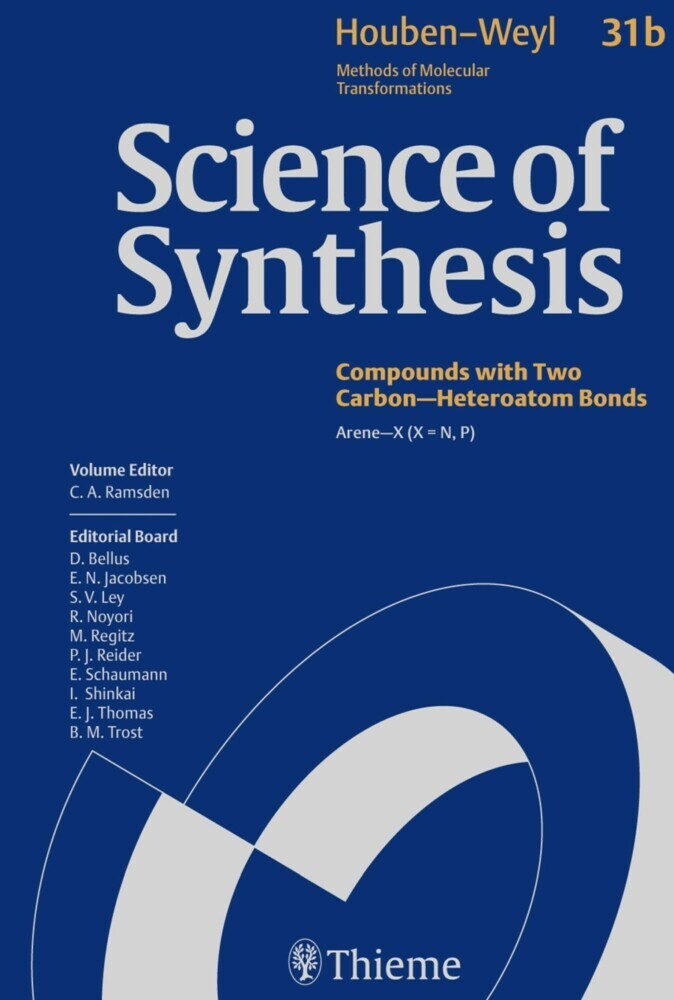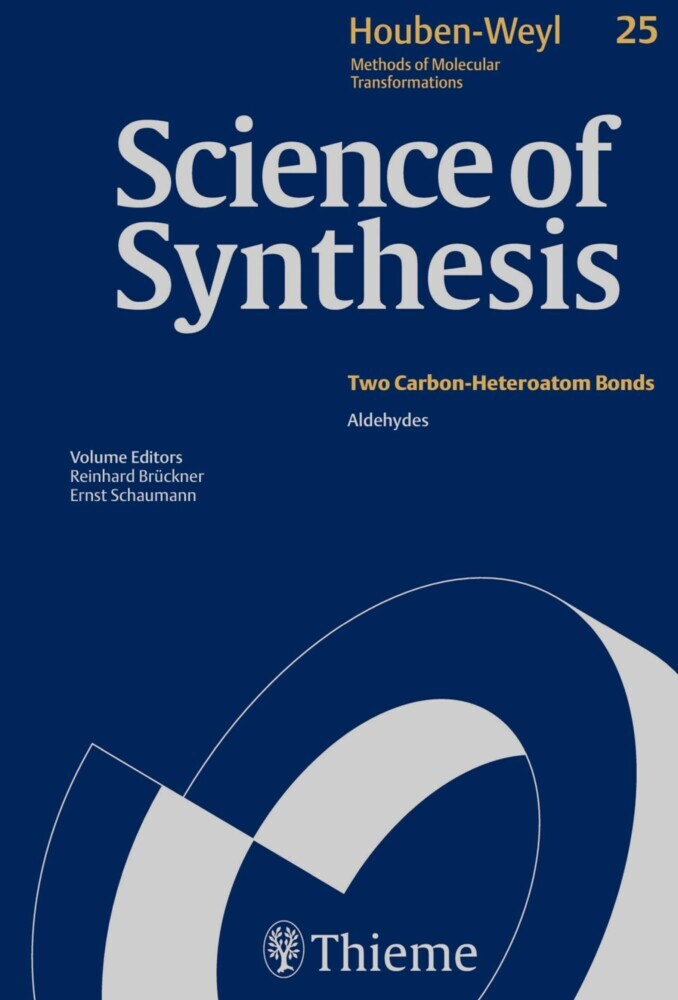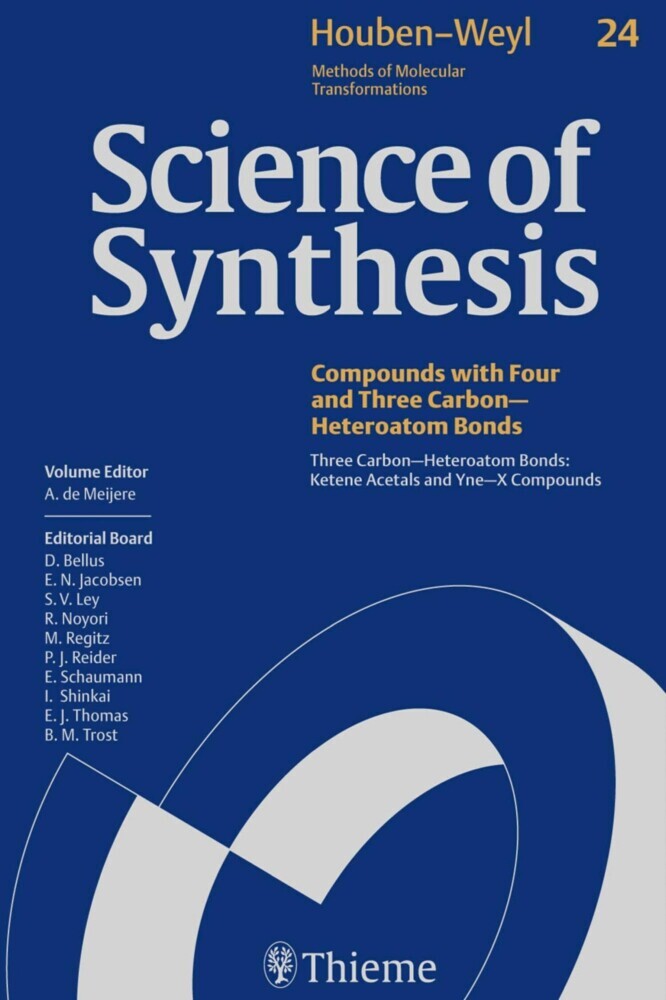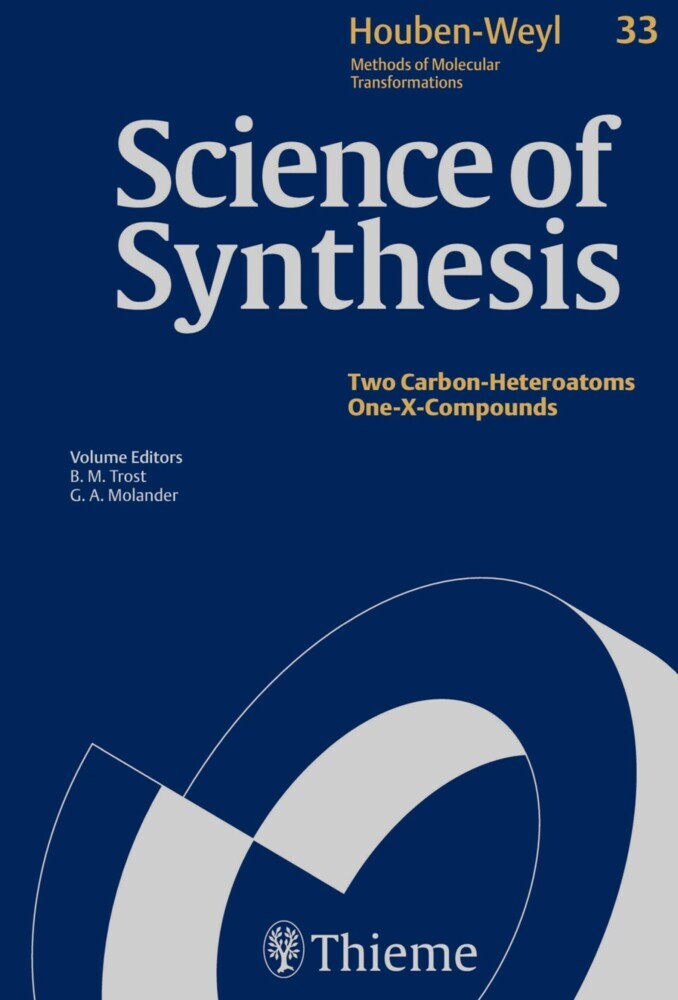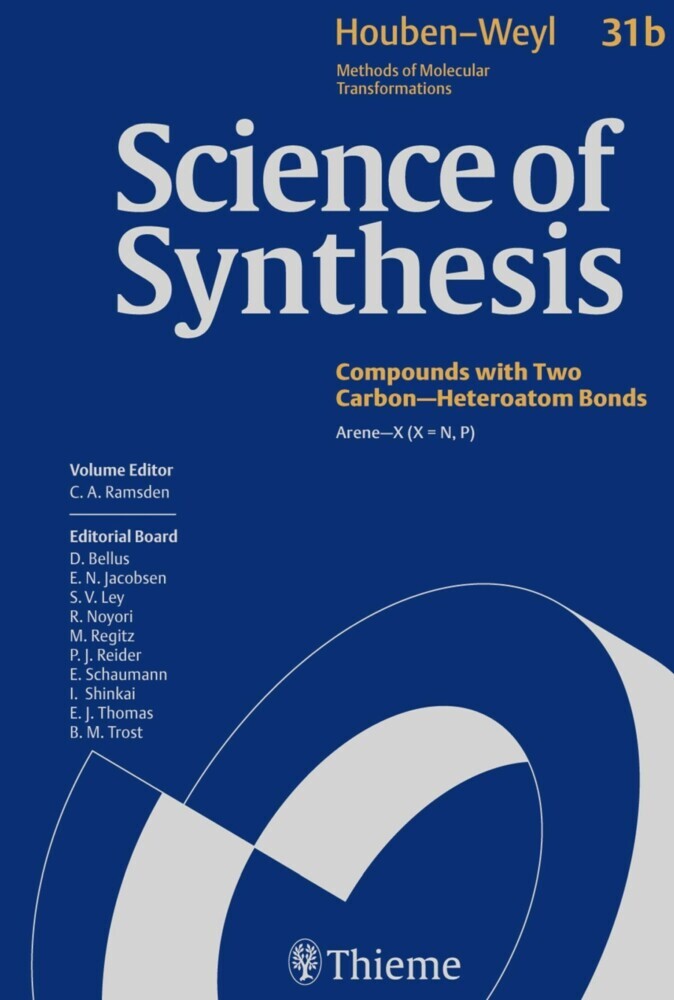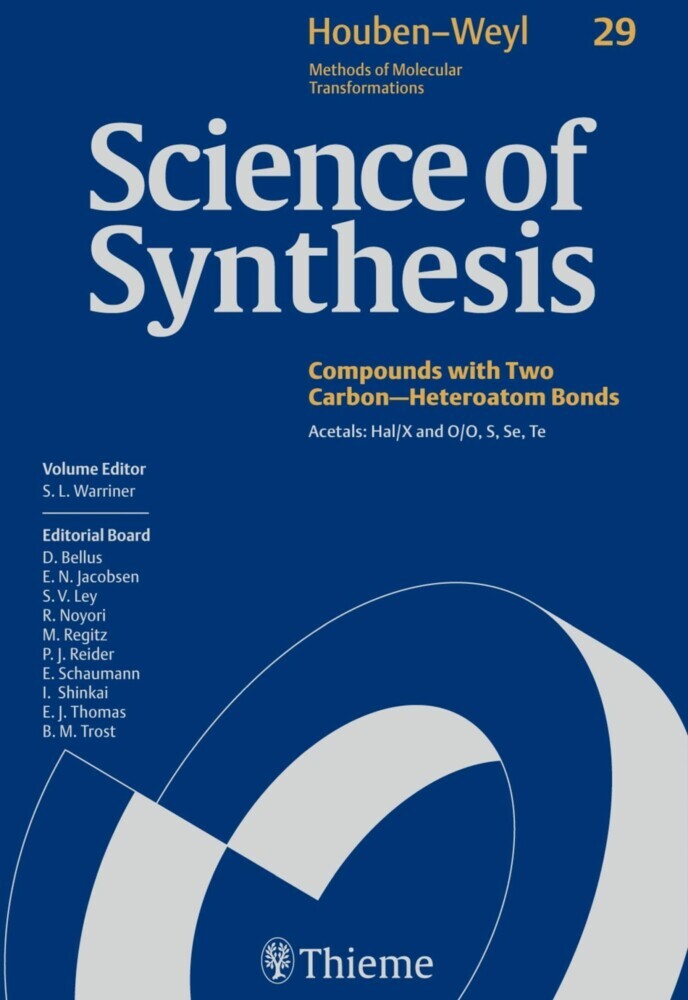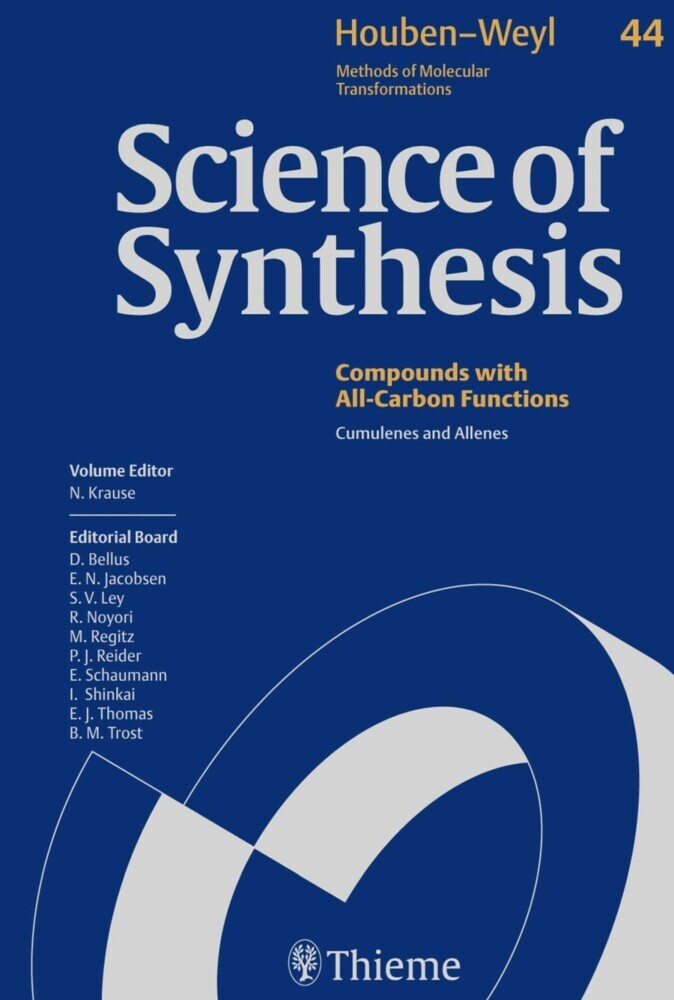Science of Synthesis: Houben-Weyl Methods of Molecular Transformations Vol. 43
Polyynes, Arynes, Enynes, and Alkynes
Science of Synthesis: Houben-Weyl Methods of Molecular Transformations Vol. 43
Polyynes, Arynes, Enynes, and Alkynes
Science of Synthesis: Houben-Weyl Methods of Molecular Transformations is the entirely new edition of the acclaimed reference series Houben-Weyl, the standard synthetic chemistry resource since 1909. This new edition is published in English and will comprise 48 volumes published between the years 2000 and 2008.
Science of Synthesis is a quality reference work developed by a highly esteemed editorial board to provide a comprehensive and critical selection of reliable organic and organometallic synthetic methods. This unique resource is designed to be the first point of reference when searching for a synthesis strategy.
- Contains the expertise of presently 400 leading chemists worldwide
- Critically evaluates the preparative applicability and significance of the synthetic methods
- Discusses relevant background information and provides detailed experimental procedures
For full information on the Science of Synthesis series, visit the Science of Synthesis Homepage
1;Science of Synthesis - Volume 43: Polyynes, Arynes, Enynes, and Alkynes;1 1.1;Title page;3 1.2;Imprint;5 1.3;Preface;6 1.4;Volume Editor's Preface;8 1.5;Overview;10 1.6;Table of Contents;12 1.7;Introduction;30 1.8;43.1 Product Class 1: Linear Conjugated Diynes, Oligoynes, and Polyynes;66 1.8.1;43.1.1 Product Subclass 1: Alka-1,3-diynes;67 1.8.1.1;43.1.1.1 Synthesis of Product Subclass 1;67 1.8.1.1.1;43.1.1.1.1 Method 1: Copper-Promoted Oxidative Homocoupling of Terminal Alkynes;67 1.8.1.1.1.1;43.1.1.1.1.1 Variation 1: Glaser Coupling;68 1.8.1.1.1.2;43.1.1.1.1.2 Variation 2: Eglinton Coupling;71 1.8.1.1.1.3;43.1.1.1.1.3 Variation 3: Hay Coupling;73 1.8.1.1.1.4;43.1.1.1.1.4 Variation 4: Copper-Promoted Oxidative Homocoupling of Silylacetylenes;77 1.8.1.1.1.5;43.1.1.1.1.5 Variation 5: Copper-Mediated Solid-State Coupling;78 1.8.1.1.1.6;43.1.1.1.1.6 Variation 6: Silver(I) 4-Toluenesulfonate/Copper(II) Chloride/N,N,N',N'-Tetramethylethylenediamine Catalytic System and Solid-Phase On-Bead Coupling;78 1.8.1.1.2;43.1.1.1.2 Method 2: Heterocoupling of Terminal Alkynes with 1-Haloalkynes;80 1.8.1.1.2.1;43.1.1.1.2.1 Variation 1: The Cadiot--Chodkiewicz Coupling;80 1.8.1.1.2.2;43.1.1.1.2.2 Variation 2: Polymer-Supported Cadiot--Chodkiewicz Coupling;83 1.8.1.1.2.3;43.1.1.1.2.3 Variation 3: Other Copper(I)-Catalyzed Heterocoupling Reactions;84 1.8.1.1.2.4;43.1.1.1.2.4 Variation 4: Cross Coupling of Alkynyl(phenyl)iodonium 4-Toluenesulfonates;85 1.8.1.1.2.5;43.1.1.1.2.5 Variation 5: Copper(I)-Promoted Heterocoupling between Silylalkynes and Chloroalkynes;86 1.8.1.1.3;43.1.1.1.3 Method 3: Homocoupling of Alkynyl Grignard Compounds;86 1.8.1.1.4;43.1.1.1.4 Method 4: Heterocoupling of Alkynyl Grignard Derivatives with 1-Haloalkynes;87 1.8.1.1.5;43.1.1.1.5 Method 5: Homocoupling of Alkynyllithium Compounds;88 1.8.1.1.6;43.1.1.1.6 Method 6: Coupling of Alkynylstannanes;89 1.8.1.1.6.1;43.1.1.1.6.1 Variation 1: Homocoupling of Alkynylstannanes;89 1.8.1.1.6.2;43.1.1.1.6.2 Variation 2: Cross Coupling of Alkynylstannanes;89 1.8.1.1.7;43.1.1.1.7 Method 7: Homocoupling and Cross Coupling of Alkynylboron Derivatives;90 1.8.1.1.8;43.1.1.1.8 Method 8: Dimerization of 1-Selanylalkynes;91 1.8.1.1.9;43.1.1.1.9 Method 9: Demercuration of Bis(alkynyl)mercury Compounds;92 1.8.1.1.10;43.1.1.1.10 Method 10: Coupling of Alkynylnickel Complexes;92 1.8.1.1.11;43.1.1.1.11 Method 11: Buta-1,3-diynes from Alkynylzirconocenes;93 1.8.1.1.12;43.1.1.1.12 Method 12: Palladium-Catalyzed Coupling of Terminal Alkynes;93 1.8.1.1.12.1;43.1.1.1.12.1 Variation 1: Homocoupling of Terminal Alkynes;94 1.8.1.1.12.2;43.1.1.1.12.2 Variation 2: Heterocoupling of Terminal Alkynes;96 1.8.1.1.13;43.1.1.1.13 Method 13: Palladium-Catalyzed Coupling of Alkynylstannanes;99 1.8.1.1.14;43.1.1.1.14 Method 14: Other Transition-Metal-Mediated Alkyne Coupling Processes;99 1.8.1.1.15;43.1.1.1.15 Method 15: Elimination of a Hydrogen Halide from 1,4-Dihalobut-2-ynes;100 1.8.1.1.16;43.1.1.1.16 Method 16: Elimination of a Hydrogen Halide from Haloalkenynes;101 1.8.1.1.16.1;43.1.1.1.16.1 Variation 1: Elimination of a Hydrogen Halide from 1-Haloalk-1-en-3-ynes;101 1.8.1.1.16.2;43.1.1.1.16.2 Variation 2: Elimination of a Hydrogen Halide from 2-Haloalk-1-en-3-ynes;104 1.8.1.1.16.3;43.1.1.1.16.3 Variation 3: Elimination of a Hydrogen Halide from 1-Haloalk-3-en-1-ynes;105 1.8.1.1.17;43.1.1.1.17 Method 17: Buta-1,3-diyne Formation from Carbenes and Carbenoids (Fritsch--Buttenberg--Wiechell Rearrangement);106 1.8.1.1.18;43.1.1.1.18 Method 18: Synthesis of Buta-1,3-diynes via Phosphorus Ylides;108 1.8.1.1.18.1;43.1.1.1.18.1 Variation 1: Wittig Synthesis Using Phosphacumulene Ylides;108 1.8.1.1.18.2;43.1.1.1.18.2 Variation 2: Flash-Vacuum Pyrolysis of 2-Oxoalk-3-ynylidenetriphenylphosphoranes;109 1.8.1.1.19;43.1.1.1.19 Method 19: Base-Catalyzed Triple-Bond Isomerizations (Zipper Reaction);111 1.8.2;43.1.2 Product Subclass 2: Linear Conjugated Oligoynes and Polyynes;112 1.8
| ISBN | 9783131722218 |
|---|---|
| Artikelnummer | 9783131722218 |
| Medientyp | E-Book - PDF |
| Copyrightjahr | 2014 |
| Verlag | Georg Thieme Verlag KG |
| Umfang | 773 Seiten |
| Sprache | Englisch |
| Kopierschutz | Digitales Wasserzeichen |

